What Is Visual Identity?
A visual identity is the combination of design elements people use to recognize your company.
In general, your visual identity is composed of the brand’s overall aesthetic, use of colors, logo, brand name, typography, and smaller visual elements. These components, while minor on their own, can create a major impact on your brand identity when combined strategically. One example of a visual identity champion is McDonald’s. From their iconic arches to their color palette, they are a globally recognized brand. They’ve created a visual identity that isn’t limited by language or cultural boundaries.

Memorable, recognizable, and admirable are the three central goals of a strong brand identity. But of course, that’s easier said than done. Your visual identity should always be considered in context to your competitor set. If you’re a fast-food chain, McDonald’s red and yellow should probably come off the table. But if you’re an emerging tech company, those colors may be a great opportunity to differentiate in your industry! Consider working with a reputable branding and marketing agency, such as Bluetext, to run a full competitive analysis and to ensure you have a well-planned out brand that you can consistently maintain.
Why Is It Important?
A well-defined visual identity allows you to ensure all your brand designs support your company and its overall business goals. In creating a visual identity, you’ll want to ensure you choose a logo, color palettes, fonts, visuals, and design style that fits the way you want your company positioned in the market. Are you looking for approachability? Maybe you want to be perceived as more aggressive in price or quality. All of these brand attributes can be strengthened with visual elements. Beyond defining these individual elements, you’ll want to ensure they are cohesive and can be used consistently.
By creating a consistent and well-defined visual identity you become more memorable and recognizable for your customers.
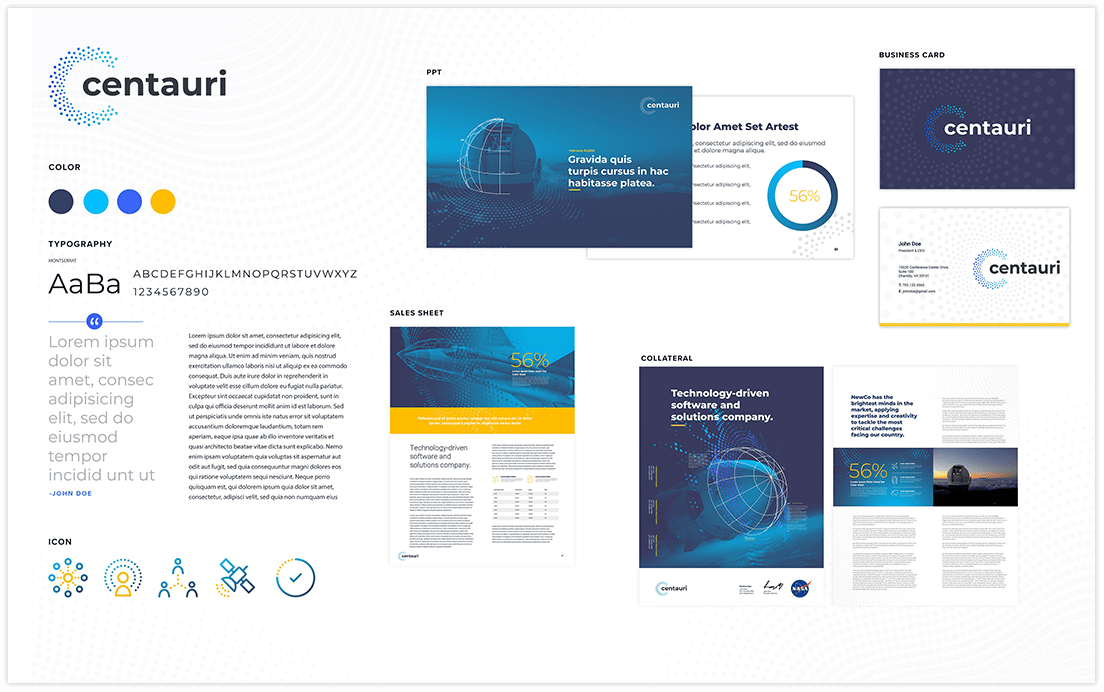
In developing your visual identity, there are countless free checklists and templates to utilize. But a word of caution, nothing can replace the creativity of a top-quality graphic designer. The good news? Bluetext has a full design team that’s ready to assist you every step of the way in developing your company’s visual identity.
Do you really want your brand to stand out? Then consider a custom font. Companies such as Netflix, Google, Apple, and the BBC all utilize custom fonts to help stand out from the competition while increasing their recognizability. Just ensure your custom font meets accessibility standards. Decorative or overly stylized fonts can often be difficult to read even for users without visual impairments or reading disabilities.
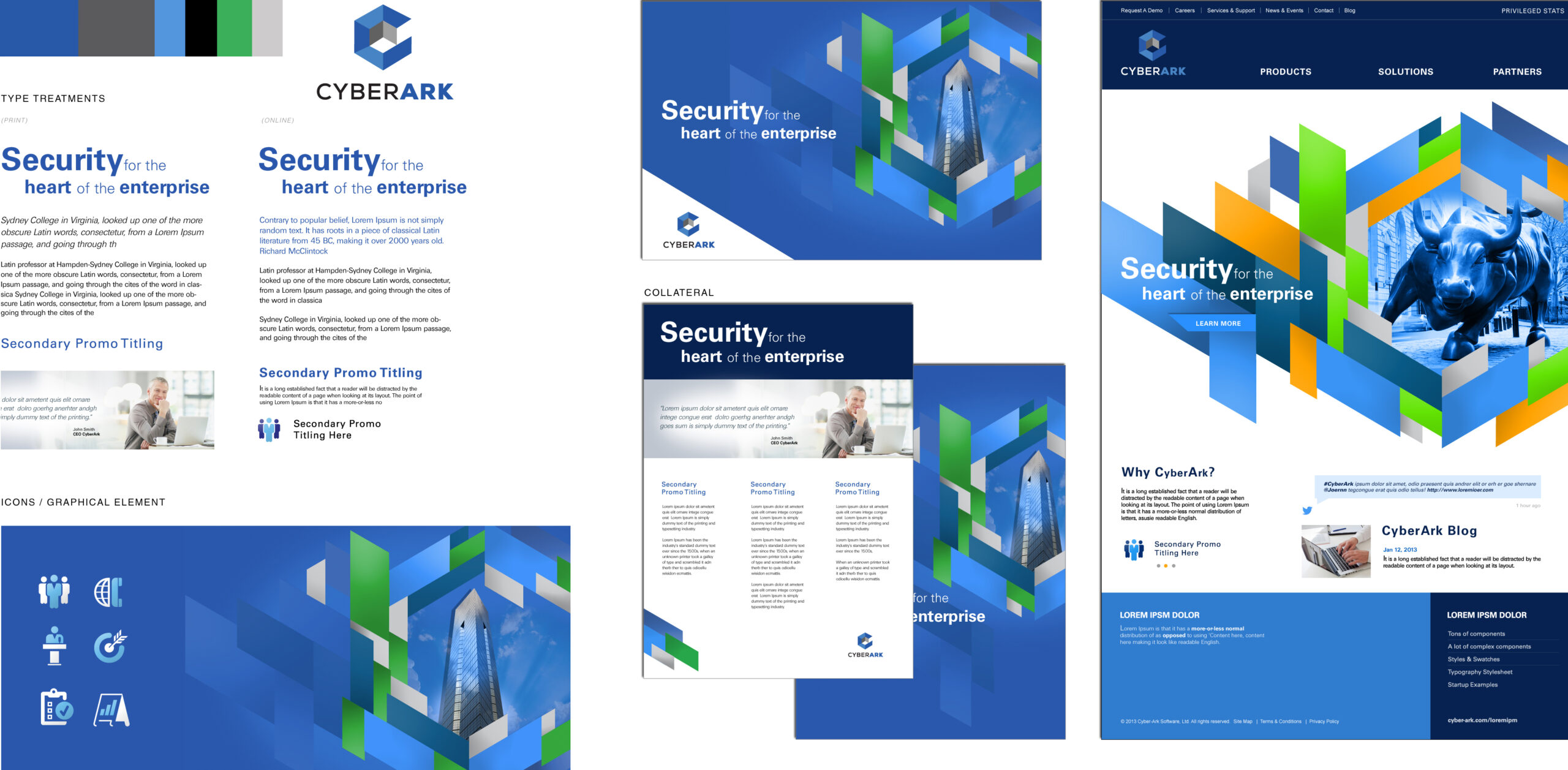
Key Elements of a Visual Identity
So where do you begin building a strong visual identity? This is far from an all-encompassing list, but here are the top elements Bluetext suggests you start with. Keep in mind, the priority elements may vary based on the platform and the brand. For example, the specific visual identity elements needed for an app for a global brand will be different from what’s needed for a regional-sized company’s desktop site.
That being said, here’s a concise list of elements Bluetext considers cornerstone in a brand identity:
- Logo: Essential for every business. Your logo is one of the first elements users will notice, so you need to make sure it’s memorable.
- Color Palette: Defining your band’s color palette increases consistency across your brand.
- Fonts: Again, a consistent font is essential. Whether it’s a set of free fonts or custom fonts, make sure they reflect your business’ goals.
- Visuals: From iconography to images, ensuring they align with the rest of your visual identity is essential.
- Design Style: Whether its modern, eclectic, or industrial, sticking to one design will increase coherence between all your visual identity elements.
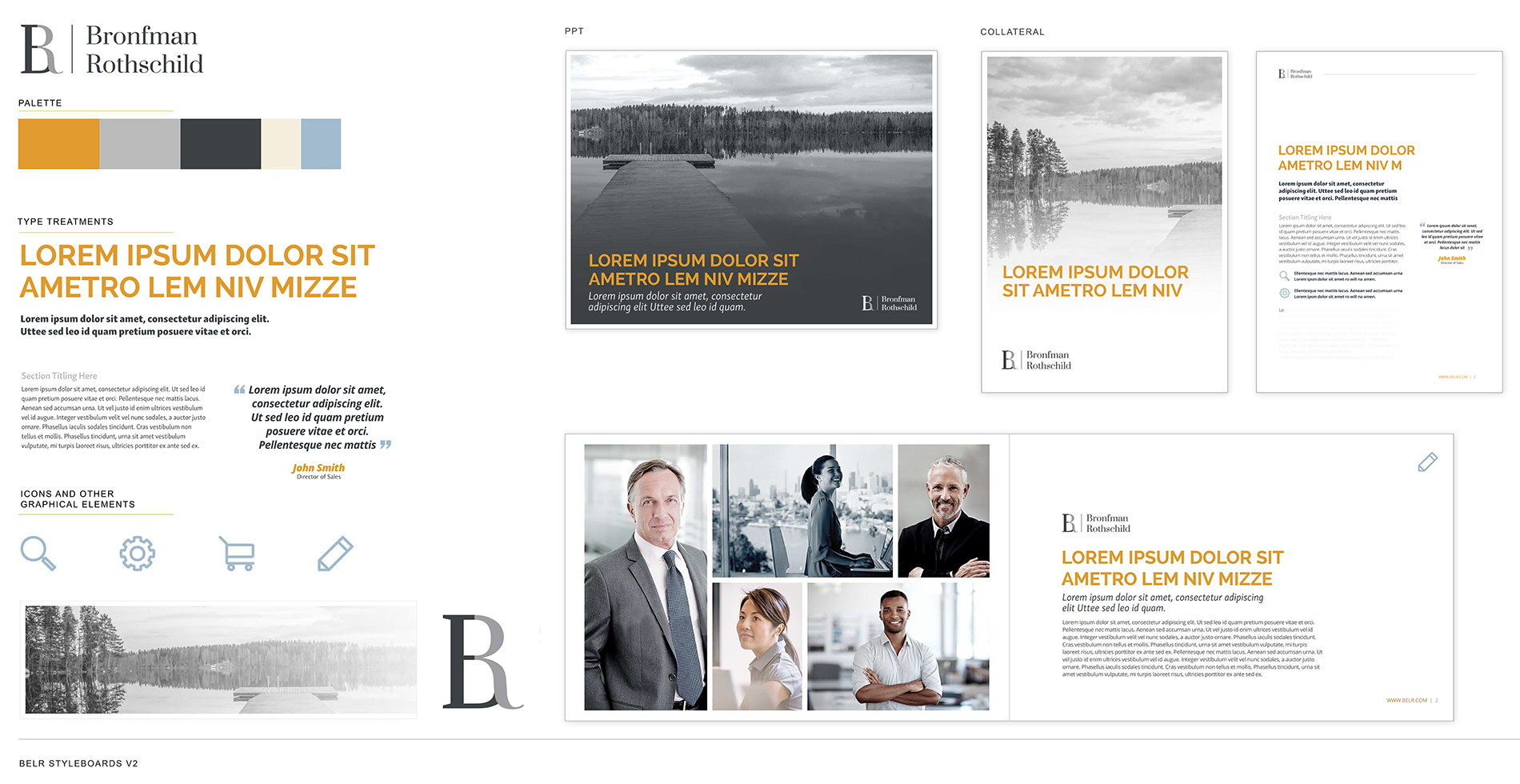
Creating Your New Visual Identity
A good place to start in any rebrand? Consider looking at other notable companies, within and outside your own industry! There is brand inspiration all around us, so next step; ensure the success of your new brand by enlisting the help of a professional, such as Bluetext. A branding agency can take your list of brand inspirations, along with creative field trip and industry-backed insights to help guide you through every step of the way.
One of the biggest takeaways is to ensure each element supports each other and thus the overall visual identity. The other most important takeaway is to ensure you consistently use your visual identity across all branding opportunities to set your company up for success.
It’s rare for a business to offer its services for free. The phrase “there ain’t no such thing as a free lunch” reigns true in most industries and all business decisions. Originating with early-century saloon owners marketing free, salty lunches as a way to entice beer drinking, even the etymology of the #TNSTAAFL phrase foreshadows the destiny of commerce itself – it’s impossible to get something for nothing.
So, what does a free ham sandwich in 1891 have to do with 2020 content marketers and gated thought leadership? Imagine your business is the bar and that hungry and thirsty passerby out front is the CMO searching for a way to convince their boss on more paid media dollars, or a CTO who needs a VPN alternative. You have something they could want – a delicious, frothy piece of premium content to quench their industry-specific questions. Post that “Free Lunch” sign, give them some snacks, and then charge them for the beer to wash it all down. You’ll have a bar full of returning customers every time.
You Want to Be a Thought Leader?
Let’s break it down. Businesses that are trying to establish themselves as thought leaders in their space usually have two types of content: Blogs and premium content. Typically, you want to spend your time on the premium content first and then chop it up into free digestible portions, which become your blogs. Since the blogs are free and busting at the seams with the same SEO juice that you prioritized in your premium content, both should come up as a result when someone is looking online for an industry-question you have the answer to.
Think about the last time you were researching B2B tactics. You wouldn’t hand over your email address to just anyone at the beginning of your research. You browsed around to see who knows what they’re talking about. Once you found a credible thought leader, then you actually started paying attention to what they were talking about.
Economy vs. Premium Content
According to content marketing agencies, balance is key. The trick is to walk the line between having free ungated blogs that are enticing and helpful to draw traffic but not too helpful and giving away a company’s expertise without gaining any leads. Save the premium advice and info for the premium content. Ask yourself, “Would someone reasonably pay for this service?”
Make it exclusive, insightful, and urgent. Typically, premium content are eBooks, courses, webinars, checklists, and sometimes videos. Those resources take a lot of effort to create, so you want to put them to work for you and your marketing team. This premium content comes with a price or a gate. The key to the gate and unlocking the juicy stuff is usually as harmless as an email.
As a top content marketing agency, Bluetext breaks down some do’s and don’ts behind gating the premium content.
Do Design Gated Content Conversions Using Ungated Content UX/UI
Make sure your tip top-funnel blogs feed into your top funnel gated content. A UX design company will engineer an ungated content user interface to drive invested leads to gated content. Dangle the carrot and then drive them down a rabbit hole of insights. If your resource page template’s layout has a related topic listing, you can get someone reading one blog to jump to the next, especially when you have click-worthy resource titles.
Create a clear, focused path to follow. Put an enticing CTA at every step of your ungated posts to draw them to the gated content. Theoretically, the user lands on a first blog post via Google search, they peruse 2-3 of your other blogs, and then they are a bit invested by the time they get to gated content. Long story short, using the Free Lunch scenario, clean up your bar so it looks inviting enough to have them buy a drink.
Don’t Forget to Design the Landing Page UX/UI for Conversion
At least make the gated content page template easy to use and worthy of personal info. Best practices for gated content landing page design include showcasing the product, talking about the benefits and insights they can learn, highlighting a quote from the piece, and ideally some social proofing or testimonials. A website design agency will be your best bet to formatting these nuggets of information in a clean, digestible fashion. Like any other business transaction, sell it with foreshadowing what they are about to invest in.
Do Add SEO Excerpt from Gated Content on the Landing Page
The Google Algorithm crawls ungated content, but while you will be losing out on SEO potential by putting keywords behind the gate, you can still put some of those keywords directly on the landing page. Think of it like a teaser, or a sample sip of the beer you want them to buy.
Don’t Miss Out on Capturing User Journey Clues Via CTA Pixel
If the user has followed the intended path laid out above, they have digested other information on the website before converting on the gated content. A digital marketing and analytics expert will implement Google Analytics or UTM parameters to track where users come from and behavioral trends. This is a critical insight that can help your sales and marketing team follow up and understand the lead without asking them. In fact, don’t ask them anything else besides their email (coming up next!).
Trusting a digital marketing and analytics agency to configure the UI/UX back end of your CMS to gather clues (via UTM or Google Analytics) will ensure these tools talk to your CRM when it passes over the lead. Your CRM can then organize to segment those leads into audience pools with the user journey info and UTM parameters. Did they arrive via Facebook or LinkedIn? Did they read about technology or marketing thought leadership? Did they visit SMB or Enterprise blogs before? Depending on what you want to do with the leads gathered from the gated content, a digital marketing agency can follow up with retargeting campaigns. By taking out the guesswork, digital marketing campaigns are then geared toward the topics and categories you know a specific user is interested in.
Don’t Over-Gate with Nosey Forms
Sometimes businesses want more defining characteristics of the user to help their follow up marketing to have some foundational info. Asking for an email is the easiest marketable piece of info you can gather – but should you want more, make sure the form is at least easy to use. For instance, free type is ok, but dropdown select from offers convenience. Ideally, if you need to ask for more info, triage that asks by making some questions optional so you don’t scare anyone away. Remember – you want them more than they want you at this point. You might be the third tab they have open in their research, so think twice if knowing their position is worth losing them to a competitor’s simpler gated content.
Do Gate Content. Don’t Gate Content.
We wish it were black and white, but the answer to the infamous To Gate or Not to Gate question comes down to the following:
- How exclusive is your offer?
- How easy is your form to fill out?
- How SEO friendly is your LP?
- How actionable is your CTA?
If you have your thought leadership on fleek from a UX/UI, SEO, and CMS perspective than you’re ready to start offering free lunches to any potential lead that comes into your digital business.
Interactive content is here to stay. Just take a look at the 96% completion rate on BuzzFeed quizzes. Even more, a 2016 Content Marketing Institute (CMI) study found that just over 80% of marketers say that interactive content is more effective than static content when it comes to grabbing consumers’ attention.
Well, what even is interactive content, anyway? Interactive content is “content that requires the participants’ active engagement — more than simply reading or watching. In return for that engagement, participants receive real-time, hyper-relevant results they care about.”
Digital branding agencies, such as Bluetext, will ensure you are leveraging all that interactive content has to offer. Here are the top 3 types of interactive content to look out for in 2020.
Quizzes and Assessments
Quizzes and assessments are pieces of interactive content in which the user provides answers to a few questions in order to receive insights based on them. They are fun for the user to complete, and if the results are what they were looking for, they will help you build trust with your audience.
This type of interactive content doesn’t only boost engagement — they also help you get to know your audience. So when you plan to incorporate quizzes or assessments into your content plan, seek out a brand strategy agency to help you develop your content and ask yourself: What do I want to know about my audience? You may discover something new and gain some essential insights that can help you tailor your marketing efforts to be more effective.
Bluetext, a leading branding company, worked with the Graduate Management Admissions Council (GMAC) to develop a microsite to invite top-of-funnel business school candidates to learn about what is available to them in the world of graduate business schools. The introduction page on the website is an interactive quiz that helps direct users to content specifically geared toward them based on where they fall in the business school process.
Polls
Polls are the easiest and simplest way to introduce interactive content to your marketing plan. They provide a quick way to get in touch with your audience and allow you to build a genuine connection with your followers.
The most straightforward way to use polls is to ask your audience for opinions on your content, service, or product. This not only helps you drive engagement online but gives you great insight into how your audience is feeling about your brand.
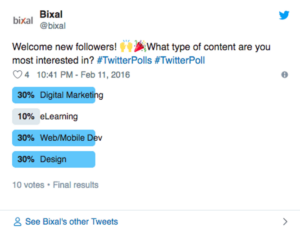
You can also invite your audience to interact with your profile by asking fun, light-hearted questions that invite them into learning more about what your company has to offer.

Contests
According to the CMI report, marketers believe that contests are the most effective type of interactive content you can use, especially in the early stage of the buyer’s journey.
Contests can include traditional raffles or giveaways. They can offer the chance to win a prize if they refer a friend to your company’s offerings. You can even introduce photos or hashtag contests where you invite your audience to submit their own user-generated content.
We have seen a rise in these types of hashtag contests and challenges across all social media platforms, especially on TikTok. The platform allows companies to leverage a hashtag to promote their brand, and users are eating it up.
Guess was the first brand in the US to release a marketing campaign as an official partner with TikTok. They ensured that every time a TikTok user opened the app, they were directed to the #InMyDenim hashtag challenge. Since its launch, videos with the hashtag have garnered over 38 million views and introduced the Guess brand to young Millenials and Generation Z.
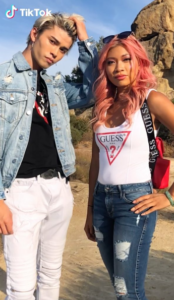
Contests are great at bringing out people’s natural curiosity and competitive spirit, so encourage them to participate by providing an engaging contest.
Interactive content that is engaging and personalized provides your audience with a new way to engage with your brand and can build trust with your audience. Learn how Bluetext can help you leverage interactive content in your content marketing plan here.
For a top marketing agency, trade shows are essential events to attend to learn all the tricks of the trade. It is usually a one time a year event where all the major industry players convene to learn about new products, network and promote their brands. It brings back old notions of experiential event marketing, but in 2020, brands are adding a digital twist. Now more than ever, companies are pairing their physical trade show presence with huge digital thumbprints, from hyper-targeted ads to Micro-Moments.
National Retail Federation (NRF) and their annual Big Show is a great example of how to do a trade show right. NRF’s Big Show is the largest retail conference and expo event, gathering over 40,000 attendees and 18,000 retailers from over 99 countries under one roof. Big Show capitalizes on Micro-Moments both before and during the show. By analyzing these tactics, we can learn how important Micro-Moments are for users and how to properly utilize them.

So what is a Micro-Moment? A Micro-Moment is an intent rich moment when an attendee uses their device to act on a need, including to know, to go, and to buy. The brilliance behind micro-moment marketing is that in the world today, consumers are bombarded by content everywhere they turn. Inc.com says the industry has reached a point of “content shock” where consumers are oversaturated and cannot consume any more content than they already are. Consumers spend an average of 4.7 hours each day on their smartphones, continually distracted and overstimulated. This only escalates the challenges marketers face to achieve consumers’ attention.

To combat the new challenges encountered with fragmented media interactions, top digital marketers have adopted a new mentality. This new philosophy zeroes in on distinct moments in the consumer buying process. The I-want-to-know moment, the I-want-to-buy moment and even the I-want-to-go moments.
Before the Show, NRF was strategic in focusing on the Micro-Moments of their target audiences’ “I-want-to-know” and “I-want-to-buy” moments through the use of various paid media tactics. Through the use of paid social, NRF increased brand awareness and utilized the “I-want-to-know” moment of users. Before driving users to register for the event, it’s crucial to make them aware of the brand, educating them about the event, as well as driving upper funnel traffic down the line. Paid display is where lower funnel traffic acts upon the “I-want-to-buy” moment. Paid display not only helps to generate qualified leads but also drives registrants.

During the Show, the various speakers and topics expanded upon Micro-Moments as well. A huge focus of sessions was on how to drive better experiences, better content and better strategy for consumers. There are various innovative technologies and solutions companies can utilize, as seen in the Innovation Lab and Startup Zone, that can help improve the user experience for customers in every stage of their individual Micro-Moments. Opening speaker, Satya Nadella, CEO of Microsoft, expanded upon this during his keynote session on the first day of the show. Nadella focused on how companies need to focus on the future of the retail industry, upcoming trends and how to utilize technology to transform how companies operate, are marketed and relate to consumers. By doing so, these Micro-Moments for users will be more memorable and excite consumers to change from “I-want-to-know” to “I-want-to-buy.” To see the full list of speakers, visit the NRF Speakers Page and check out the NRF Big Show 2020 recap for a full list of articles, videos, session presentations and more.
A key takeaway from NRF’s Big Show 2020 was the importance of personalizing and concentrating the customer experience in the digital era. Staying true to the NRF Vision, the National Retail Federation has acted as the eyes and ears of the retail industry. For over 100 years they have brought together important leaders from top retail companies and are the only organization committed to bringing critical foresight and insight to leaders, movers and makers.

Leading by example is an understatement, as the organization itself has been ahead of the curve in their paid media tactics and lead generation strategy. To learn more about the NRF media strategy, check out their Bluetext Hall of Fame.
Bluetext is honored to announce that Creative Director and Co-Founder Jason Siegel has been named a Judge for The FWA website awards, one of the oldest and most prestigious awards programs for website design in the industry. First launched in 2000 as the Favourite Website Awards in the UK, FWA has grown into the global leader in identifying and recognizing the best in website design. FWA remains an independent voice in the world of website design and build, recognizing the top talent across the globe and highlighting the trends and technologies that are driving website experience and results.
FWA’s Judges represent the top of the industry and come from more than 35 countries. As FWA explains on its website, “FWA is where you go to experience cutting-edge innovation in digital design and development. It’s a space that encourages the digital industry to push the boundaries of technology, to show people what is possible.”
For Bluetext’s clients, Jason being a part of the FWA Global Judge Panel means more access to the most cutting-edge designs and talent in desktop and mobile websites, mobile apps, virtual and augmented reality projects, and any creative work that pushes the boundaries.
Q&A
Why is website and UX design so important to brands and other organizations as part of their tools to build engagement with customers and other audiences?
JS: Website design and UX design is so important because it’s the #1 brand touchpoint for the customer. If done well, the digital channel, whether a responsive website, an app or an installation, can create the greatest upside with the customer and be a voracious capture-agent for user data.
What do you look for in websites that you are evaluating?
JS: In my role, I am looking for pixel-perfect execution and production consistently throughout the whole UX. I am looking for superb in-browser performance, mixed with lite-weight code, mixed with fantastical motion effects.
How should website designers weigh the look of a website versus its ability to convert visitors to customers? In other words, how do you balance style versus effectiveness?
JS: When brands live and die by their short-term conversion rates, it does allow them to stay alive and thrive while building a customer base. However, once a brand establishes itself and the many channels the brand lives on drive revenue and stabilize the brand for the long-term, it starts to get more interesting. We then look at richer experiences, more higher-level positioning, and deeper brand engagement. While this often doesn’t convert faster in the short term, it does position the brand in new pricing categories, more accurate market positioning, and greater revenues and market share overall.
Content marketing is a consistently invaluable tool to increase conversions by educating your leads and customers. As we welcome a new year as well as a new decade, it’s important to understand the emerging content marketing trends that will dominate 2020. How should you change your digital content marketing strategy to keep pace with the ever-evolving nature of content marketing?
In this blog post, we take a look at 5 content marketing trends that will keep you ahead of the curve in 2020 and beyond.
Data-Driven Content
How are you, as a brand, determining what content is useful and relevant for your audience? That’s where data comes in. By harnessing the lessons of previously successful content marketing initiatives, companies are able to reverse engineer the data and identify KPIs that preceded the success. Once those KPI’s have been established, it is easier to create content in that same strain and capitalize on the proven success. A DC-based digital branding agency like Bluetext can assist you in determining successful KPI’s and creating the rich content your audience wants to read.
Smart Device-Centric Content
Although smart devices have been a key consideration in B2C content marketing for quite some time, this year, more focus will be placed on specific functions of smart devices such as voice search. Voice search is becoming such an integral mobile tool, 48% of consumers are using voice for “general web searches.” Companies looking to stay ahead of the curve should look to optimize their content specifically for voice search purposes. Understanding how users search via their voice will help you tailor your existing content for voice-SEO and create more effective headlines for future content initiatives. A DC digital web design agency like Bluetext can help by conducting an analysis of your audience’s voice searches and recommend changes to your existing content and future content to maximize the return on your investment.
Conversational Marketing is King
In the digital era which champions online shopping, consumers are looking to establish trust and connection through more personalized, authentic shopping experiences. Conversational marketing can aid your company in engaging with your audience in a more genuine way. By engaging in a conversation, your company gains access to more personalized data about your consumers such as their specific needs and future goals. Investing in tools such as chatbots or real human-to-human experiences can make all the difference in your competitive industry. As we progress through 2020, chatbots and other AI tools will continue to improve and positively impact lead generation.
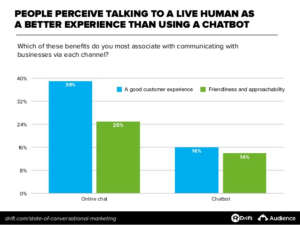
2020: The Year of the Snippet
As we know, Google dominates the search engine market share worldwide, with a resounding 92.71% of the market. When considering a user’s search intent, Google will display what they call a “snippet” at the top of the page, which provides consumers with key points within a piece of content, allowing them to receive the information they’re looking for faster. As such, it’s becoming more commonplace for consumers to enter a longtail keyword into Google, knowing that they will receive the information they’re looking for via a snippet, without clicking any page links whatsoever.
In order to win that highly coveted snippet spot, companies should look to hire an interactive web agency such as Bluetext. Bluetext’s SEO analysts can conduct an audit of your current content and pinpoint exactly where changes need to be made in order to signify to Google crawlers that your content is important. Optimizing your content for snippets will greatly enhance user experience, as users will be able to find the information they are searching for concisely and quickly. Not only will an interactive web agency audit and enhance current site content, but they will also create a content strategy and editorial calendar so your brand can continually publish content your users are searching for.
The Popularity of Podcasts
According to a recent study, 51% of the entire US population has listened to a podcast in 2019. That figure is up by 7% from the previous year. As we look ahead to 2020, podcasts will continue to dominate, as that number is expected to keep rising. Although it may seem like everyone has a podcast these days, there are still opportunities for brands to get ahead of the curve and start their own podcasts.
That being said, if you see a clear demand for audio content within your market, ensure that you create a podcast the right way. Podcasts should have clearly defined KPI’s, a regular posting schedule, and content your audience will actually care to listen to. A Virginia internet & inbound marketing agency like Bluetext can partner with your company to assess the need for a podcast in your industry and among your competitors, help you create valuable content and even develop a paid advertisement plan to spread awareness via other podcasts your audience is listening to.
2020 is already well underway and in order to achieve success, companies need to get ahead of this year’s trends with a thorough and achievable marketing strategy and plan of action. A DC digital branding agency such as Bluetext can audit your current digital content marketing strategy and suggest recommendations to help improve your current trajectory. To learn more about Bluetext and how we can help you, check out our work here.
You say you want a revolution, but do you really?
Branding is an integral part of any company’s identity. Not only does branding make a memorable impression on your consumers, but it sets the tone for what new and existing consumers can expect from you. Smart branding also offers a valuable opportunity to differentiate yourself from your competitors.
For companies who may get the sense, both internally and externally, that their brand is outdated, it could make sense to rebrand. Rebranding your entire company might seem like an intimidating proposition, however, rebranding doesn’t have to mean a major overhaul. Something as simple as updating your brand’s color palette or your content’s tone of voice can have a huge impact on how the brand is perceived, breathing new life into the already-established company identity.
That’s where Bluetext comes in. A full-service D.C. based marketing agency, Bluetext has refreshed the brands of some of the most premier companies in the country, balancing brand history with brand vision.
Bluetext suggests these five tips when considering your next brand refresh:
Determine Your ‘Why’
For many companies, it can be easy to express interest in a rebrand. However, a company must first realize why they want to rebrand. This ‘why’ will dictate the entire process and ensure the goals of the project are being realized. For example, your ‘why’ might be:
- Our messaging is confusing for consumers and isn’t aligned with how sales go to market.
- We need to differentiate ourselves and stand out from our competitors in the market.
- We’re going after a new audience and need a brand that speaks to that market.
- Our company has expanded and we need a brand that is modern, flexible, and future-proof.
- Our brand and accompanying brand story is outdated and no longer reflects the company’s values.
- We recently went through a merger or acquisition and we need to hone in under one cohesive brand identity.
- Our brand doesn’t create a memorable impression on our target audience.
Invest in High-Quality Content and Visuals
It may seem simple, but investing in high-quality content portrays a degree of professionalism to your clients. Stock imagery might be tempting, but the personality of high-quality content and visuals will help you stand out in the market, increasing your relatability with your clients. See how Invictus reaped the rewards of investing in high-quality content.
Invictus Brand Manifesto from Bluetext on Vimeo.
Change Your Brand Colors
Depending on the size of your company and the amount of signage and collateral you own, changing your brand colors can be either a minor task or a large undertaking. Business psychology reminds us that colors have different effects on different consumers. Red, for example, can elicit feelings of warmth, excitement, and intensity. Green, on the other hand, can elicit feelings of tranquility, health, and harmony.
Deciding what emotional experience you want your customers to associate with your brand can send a very clear and competitive message to the market. For example, McDonald’s conducted a brand overhaul in 2009 across Europe, trading out their signature red logo, for more of an earthy-green look. This tactic was implemented to promote a more eco-friendly image, alongside other earth-friendly transitions such as environmentally friendly refrigeration and converting used oil into biodiesel fuel. The idea caught on so well, McDonald’s has gradually updated its restaurants nationwide with the refreshed color palette.

Focus on a New Facet of Your Story
If you have a sound brand offering in the market, you may just need to find a new story to tell. Keeping your messaging fresh and personal can excite your consumers, attract potential leads, and elevate your reputation in a busy industry. See how Bluetext partnered with D.C. United to create a multi-touch, multi-channel campaign to deliver messaging across multiple digital channels, social media, email, and microsites.
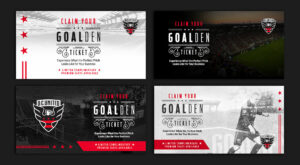
Act More Human
Authenticity is everything in marketing, there’s no question about it. In a recent survey by Stackla, 86% of consumers say authenticity is important when deciding which brands to like and support, with the most emphasis placed on authenticity by Millenials. Consumers want to connect with the companies they interact with. Promotional sales messaging can come off as disingenuous and pushy. Putting in the effort to bring an authentic and unified brand, campaign, or product message to market will make a bigger impact and ROI every time. Whether its social, blogs, email blasts, premium content, or even in-person communications, an authentic narrative will establish an authentic connection between your consumers and their advocacy for your company.
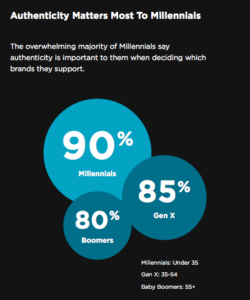
There are a plethora of ways to tweak your brand and excite your market potential. A top branding agency will tell you how a little can go a long way. Focusing on some low-hanging fruit can delay a full-scale revolution and save you time and money.
For more information for a refreshing brand opportunity with Bluetext, explore our case studies, work, and processes at www.bluetext.com/branding
Establishing your brand identity online can be a daunting task, but it’s necessary to improve your brand awareness in today’s media landscape. With more than 45% of the world’s population actively using social media, it is more important now than ever to expand your brand’s reach via social media platforms. The top social media marketing and branding agencies will know just how to navigate the social sphere to bring your brand to your customers’ fingertips.
Consistent visual identity is key
Maintaining a strong corporate visual identity (CVI) across all of your social platforms is not only imperative to help your audience recognize your brand across platforms, but it also maintains the feeling of consistency, showing your customers that you’re confident with your brand. Top branding agencies can develop branded snackables for all of your social platforms, keeping the fonts, graphics and general brand identity consistent across all visuals. From Facebook and Instagram to Twitter and LinkedIn, Bluetext can provide your company with a variety of snackables for each social site, bringing your brand identity to the next level. See how Audi Field combined its digital advertising strategy with its social media strategy.
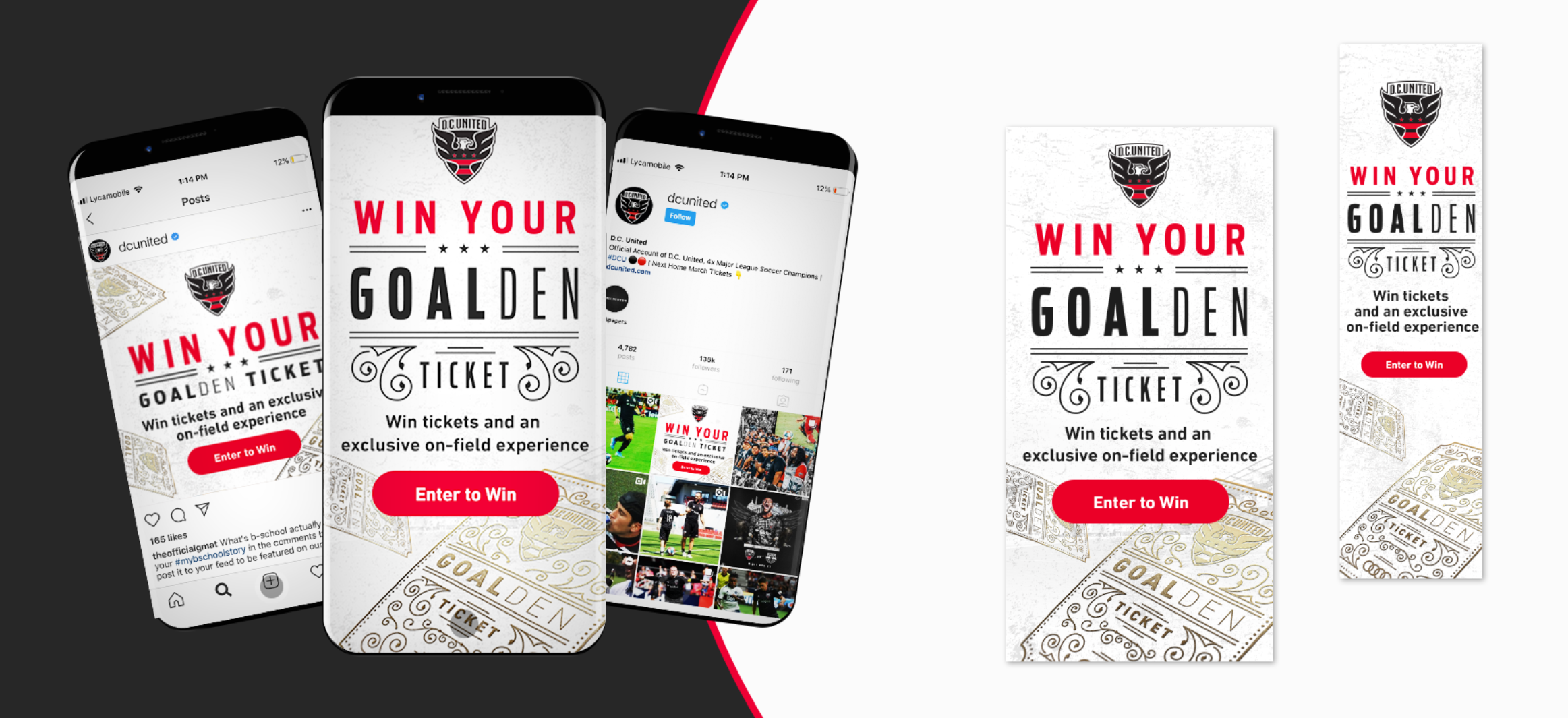
Define your brand’s voice
Okay, great – you have your company’s visual identity established…now what? Defining your brand’s voice is just as important as nailing down your CVI. Social media marketing agencies know how to position your brand to ensure that you have a unique and consistent voice across all of your social platforms, setting yourself apart from your competitors.
Although it is important to have a consistent voice, you should try to modify your tone to match the audiences across different platforms. For example, you may want to tweet something more relaxed and humorous on your company’s Twitter feed, but you would prefer to keep your LinkedIn page more professional. By tailoring your brand’s tone to match your company’s audience on each platform, you will drastically improve engagement across your social profiles.
See how Wendy’s changes their tone of voice between Twitter and LinkedIn:

The nature of social media: content sharing
It’s no secret that social media is intended to be used to engage and share content with your peers online. This is why establishing a digital presence is a crucial step in developing your brand online. Social media users consume your posts and share them with their friends, making your brand look and feel legitimate to potential customers.
Elevate your social strategy to the next level by incorporating social media influencers to give your online presence that extra boost. Influencers will give you access to a whole new set of users outside your normal audience. With influencer marketing, you can generate brand awareness among new segments through influencers’ follower bases. The top social media marketing agencies can help you gain access to the right influencers for your audience, ensuring that your brand gets in front of large targeted audiences.
Creating your social sharing strategy
With a newly established CVI, brand voice and social media audience, you’re now equipped to draft your social calendar. It’s important to experiment with days and times when sharing content across your platforms to capture your audience when they’re actively using social media. Given the nature of each social site, your audience is likely not going to be active at the same time across all channels. This is why you should vary your post times and content. Creating unique posts per platform will keep your followers engaged from platform to platform and keep them from getting bored with your content.
Branding and social media marketing agencies like Bluetext will know how to help position your company for success online. From developing your visual identity and voice to drafting a social media content strategy, top branding agencies will give your company the exposure it needs to succeed in the social media sphere.
Ready to bring your brand and social strategy to the next level? See how Bluetext can help.
Leading brands often turn to Bluetext to achieve their branding and marketing goals, helping them to increase sales, reach new target audiences, and grow beyond their expectations. In many cases, the goal is a successful acquisition, rewarding investors and other stakeholders for their support while putting them in the position for continued growth. That’s why challenger brands often partner with a leading marketing agency, like Bluetext, to put them in the position for a rewarding acquisition or merger.
The latest M&A success story involves KnightPoint and Perspecta, two companies Bluetext helped when they both needed a new brand and a new website. When Vencore and KeyPoint merged to form Perspecta, a government services provider with 14,000 employees and pro-forma revenues of $4.2 billion, they turned to Bluetext to develop and launch the company’s website under its new vibrant brand. With a new look, feel, and website, Perspecta was ready to take on something big. In early August, it was announced that Perspecta would acquire KnightPoint, another former Bluetext client who provided comprehensive managed services and solutions and specialized in modernizing IT, for $250 million. Needless to say, we are incredibly proud of both Perspecta and KnightPoint.


We have also had the pleasure of working with other brands who have seen recent success in the M&A arena and thought that this would be a good time to recognize many of those success stories. More importantly, it demonstrates the range of services that can help drive a growth strategy that leads to a rewarding acquisition. Here’s just a sampling of clients who have reached their M&A goals:
- Cigital: As an extremely successful security consulting company, Cigital built a strong business helping companies drive best practices in building security into their applications and software. As the company was looking to expand both globally and to a broader audience of companies who need to understand the importance of application security testing earlier in their development life-cycle, Cigital turned to Bluetext to completely rebrand the company. As a result, publicly-traded Synopsys agreed to acquired Cigital in 2016.

- Acentia: When the new CEO of IT Solutions – a roll-up of nine IT government contracting firms – was brought on board by its private equity owners, he turned to Bluetext to position this new company for growth, visibility, and a successful sale. Following a thorough discovery process, Bluetext proposed the name Acentia and launched the new brand identity, with a powerful website to better represent its mission supporting customers on programs of National Significance. Bluetext worked closely with the entire Acentia management team, employees and customers to overhaul its messaging, establish a new name, create its brand, design and develop a new responsive website, and re-launch the company to the public. In the end, Acentia was acquired by Reston-based Maximus Inc. for $300 million.

- Force3: Force3 is one of the fastest-growing network security services and solutions company servicing the Federal Government with revenues of more than one billion dollars annually. When its brand, messaging and website needed an update, it turned to Bluetext. Shortly after help from Bluetext, Force3 was acquired by Sirius Computer Solutions as a way to better service customers in the Mid-Atlantic region.

- Altimeter: The Altimeter Group, based in Silicon Valley, is one of the hottest research, analyst and consulting firms in the digital market. It turned to Bluetext for a makeover of its brand. Bluetext designed a new approach to the market, including how it presents its name, its image and all of its digital and physical assets. Consequentially, Altimeter was acquired by consulting powerhouse Prophet.

- Sourcefire: A $2.7 billion Cisco acquisition is the culmination of a Sourcefire’s journey from startup to a global leader. Bluetext was there the entire way, with a partnership over 8 years and 2 global rebrands.

- BroadSoft: BroadSoft was a leading global provider of software that enables service providers to deliver unified communications services to their customers. In early 2014, realizing that they needed to up their visual identity and brand, BroadSoft turned to Bluetext. The effort resulted in a global brand designed that enabled the company to target new customers and new markets and drive new solutions into the market. In the end, Broadsoft’s new brand and CVI helped them get acquired by Cisco.

Every agency today is buzzing with the word “digital”, but only the best branding agencies understand that a company’s brand identity must be executed both digitally and physically. Many traditional physical marketing tactics are still very effective at building and promoting your company’s online brand. From business cards to branded gifts and accessories, the top branding agencies will tell you that consistency is key to bringing your brand to life on and offline.
It’s important to note that physical and digital branding are not substitutes for each other; instead, they should serve as complementary parts of your marketing plan. To create a strong and recognizable brand, your company’s visual identity should be carried out across all mediums. Marketing strategies that deliver the greatest impact use a combination of online and offline techniques.
Bluetext, one of DC’s top branding agencies, recommends the following tactics for a creative, strategic spin on your brand.
Bring your A-game to networking and recruiting events.
Especially important for trade shows or industry conferences, come prepared with fully branded Powerpoints, case studies, signage, and business cards. This will surely get competitors and potential customers’ attention.
George Mason sought out Bluetext, a top dc digital branding agency for a new brand look and feel. Their website rebrand was not complete without a modernized recruitment brochure to display a new logo and tagline.
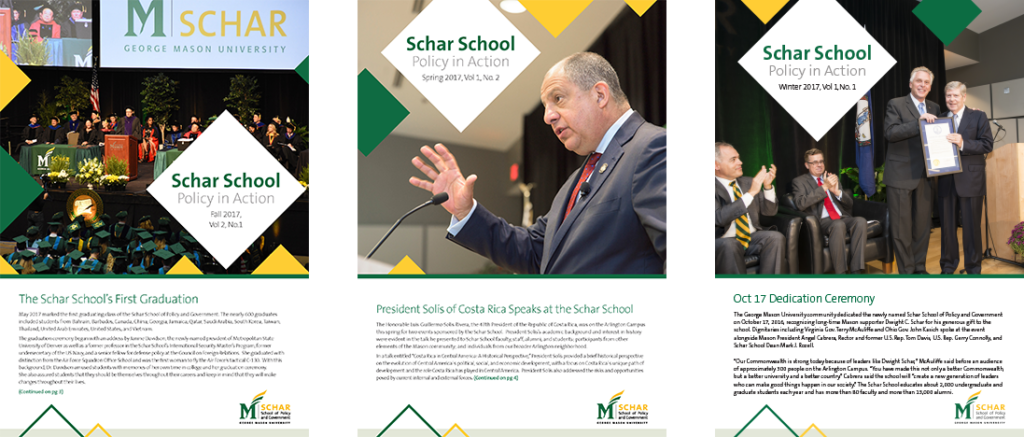
Be your own brand advocate.
Employees are by far the best brand ambassadors! Equipping them with branded portfolios, notepads and apparel provide face-to-face reinforcement that your company is well-established and cohesive. It is also a subtle yet effective strategy to showcase your proud company culture without saying a word.
Eye-catching Collateral
For any customer-facing company, using branded templates brings a sense of authority and confidence to any presentation or pitch. Take Invictus for example, whose recent website revamp was complimented by expertly designed templates to elevate their brand in future contracting proposals. Be sure to consult a top branding agency, though, to conduct thorough competitor research and ensure your brand is distinctive.
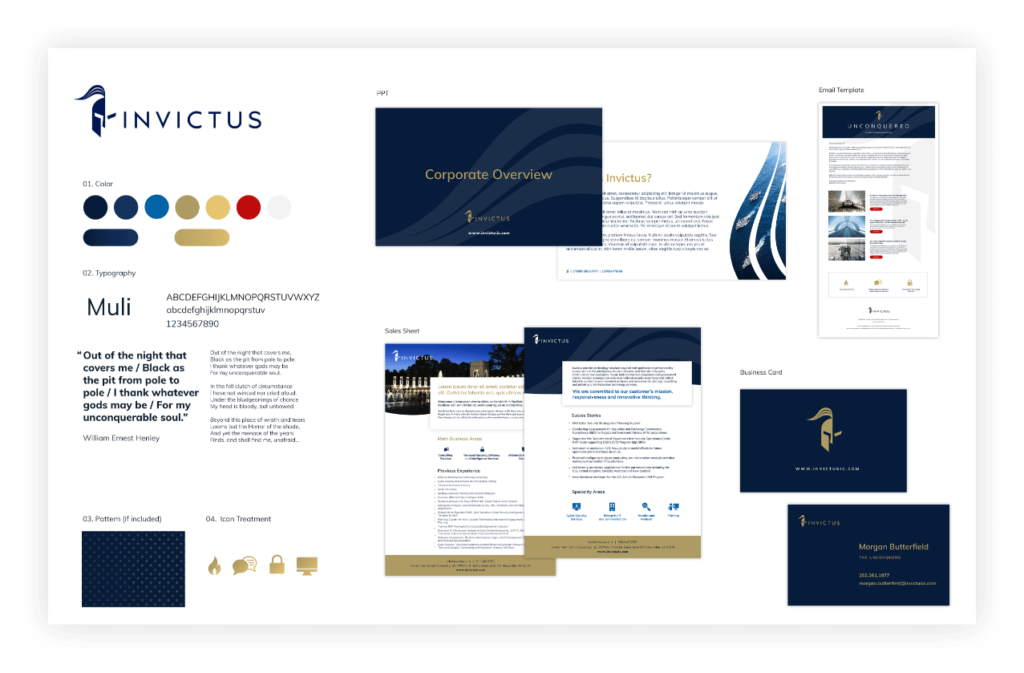
Celebrate Successes!
From a brand launch to a company anniversary event, don’t forget to celebrate! Any corporate event provides an opportunity for brand promotion. Company banners, napkins, and decor may seem trivial, but they go a long way. Having branded elements at the event can do wonders for company morale, and create great photo ops!
Pro Tip: Hosting a happy hour? Design company Koozies! It’s a savvy way to ensure drinks stay cold all evening and give employees a neat gift to take home and use in the future!
The bottom line is a brand is more than just a logo. A top branding agency will tell you that first impressions and emotions are at the core of brand strategy. Impactful brands trigger these feelings across all platforms. Digital KPIs are often centered around impressions, and the same strategy should be applied offline. Brand recognition is built upon repetition, and seeing a brand’s logo, colors or taglines carried out consistently in-person and online will trigger familiarity and ultimately conversions.
Ready to find out how a unified marketing strategy can amplify your brand? Check out our physical and digital branding services.
